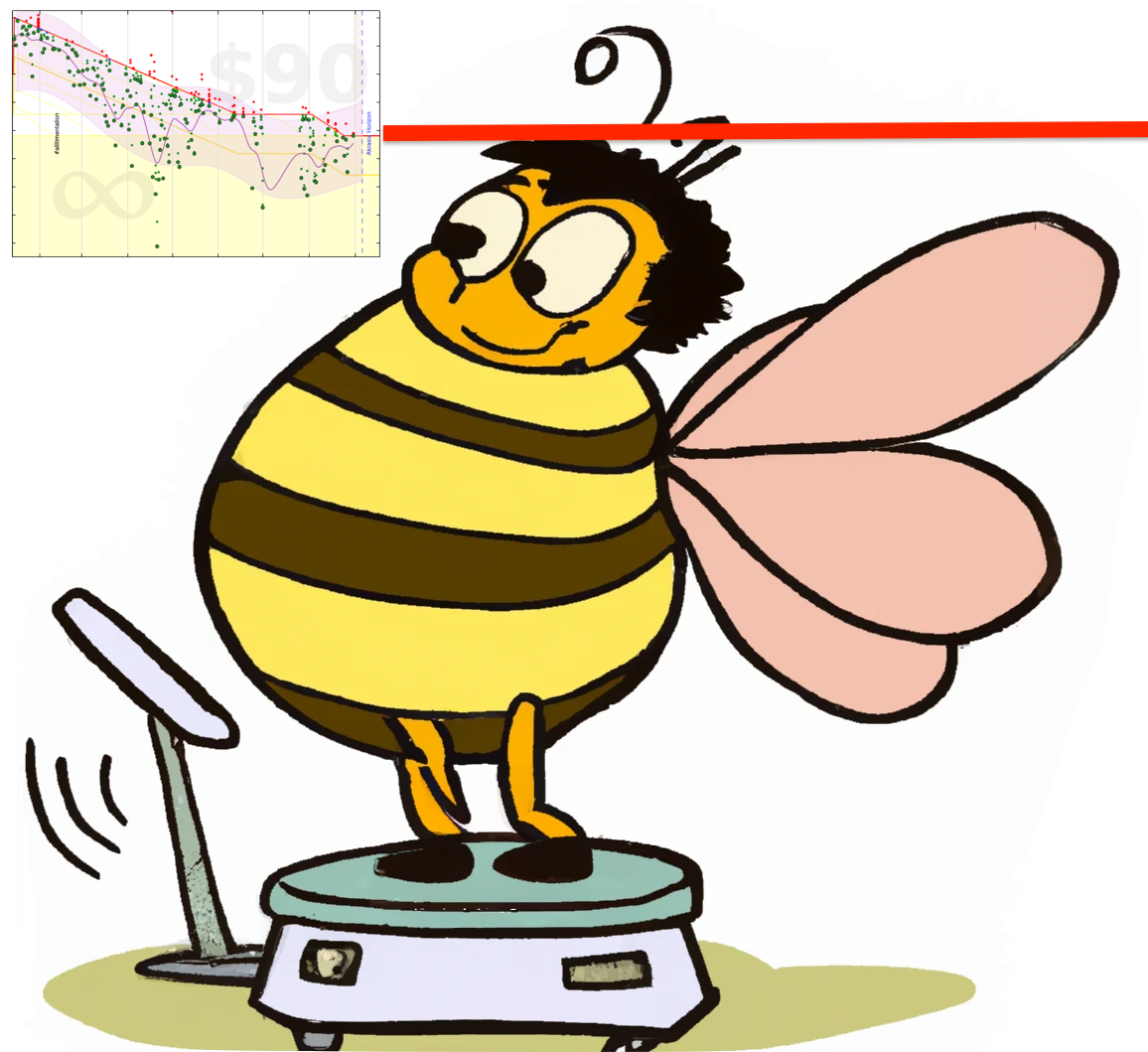
Today’s post (content warning: weight loss) was inspired by Jacob Falkovich and David B. Clear.
First, an update on my previous weight loss post from back in April, Alliterative Alimentation. I’d only been doing that for a couple months then and it’s now been over 6 months and it continues to go swimmingly. Of course it only works because I’ve made it a Whole Thing. It’s far easier than counting calories but you still have to find a way to keep it top of mind every day.
So today I thought I’d try convincing you to try something drastically less crazy — though perhaps still pretty hard — that I think applies to literally everyone.
Story time! For most of my life I ate whatever I wanted and was thin. Then one day I got old and fat. Well, half true — and I would’ve unambiguously gotten fat (truly, there’s no ambiguity there) but of course I have a Beeminder goal that prevents that. Instead I’ve had to stop eating whatever I want. I achieve that mostly by intermittent fasting, so that I actually can still eat whatever I want, just not all the time. That might not be the healthiest way to modify one’s diet (and this blog post is not recommending it! that was my Alliterative Alimentation post) to avoid gaining weight but the point is, you should have the Beeminder goal so that if/when this metabolic tragedy happens to you, you don’t wait until you notice you’re overweight to make whatever dietary / fitness / lifestyle changes make sense. You’re forced to gradually make them day by day because you’ve hard-committed to keep your weight below Beeminder’s bright red line.
Point being, becoming overweight and then losing weight is total insanity. Whatever high jinks you have to do to lose weight, it’s drastically easier and healthier if you do those high jinks to NOT GAIN IT IN THE FIRST PLACE. It’s too late, you say? You’re already overweight? Second-best time to plant a Chinese tree! Hard-commit right now to not gaining any further weight. How or whether to lose weight is a secondary question.
What about underweight people?
Them too! Or at least there’s a generalization of this advice that’s applicable to everyone. You can start with “what’s an upper bound on my healthy weight?” For many people that’s unambiguously something lower than their current weight. For me personally, I don’t know that it’s less than my current weight but, for sports reasons, I’m fully certain that I don’t want to gain, so my current weight is an upper bound. For others the answer might be your weight plus five kilograms or something.
Regardless, all of us can take the answer to that question, apply the “max” function with our current weight, and set a Beeminder goal with a flat bright red line at that number. If your weight is too low, make another Beeminder goal to get yourself up closer to that upper bound!
And, sure, in some cases it’s silly to bother with the upper bound if you’re certain your weight will never approach it. Or at least that it won’t do so without you noticing, so you can cross that bridge if you come to it. But it can’t hurt, is the point.
What about people with eating disorders?
Even them! Note the underlying assumption that whatever upper weight bound you set is a healthy one. If the very existence of that upper bound, however far away it is, may trigger disordered eating then I take it back. Don’t actually do this in that case.
The bottom line on the upper line
This has been a lot of words (it’s a dicey subject, ok?) to say something pretty simple: Establish an upper bound for your weight and hard-commit to not crossing it as you age. And if you’re losing weight, do the same thing to ratchet yourself, always locking in your losses.
I know my opinions on weight loss are controversial but “don’t yo-yo” is something we can all agree on and that’s ultimately all that this advice boils down to!